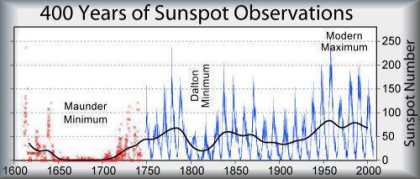Sunspot numbers are continuing on a downward trend. June started with a Solar Flux of 115 and is forecast to peak roughly every 21 days. There was a peak forecast for June 26 at 105, and in July, there is a peak of just 100 forecast around the 14th. The dips in between could be as low as 85 on 7-10 July. The average daily Solar Flux reading for April was 112, dropping to 98.1 in May and averaging 98.5 in June (based on information available).
There has only been 1 spotless day in 2011 so far, compared with 51 spotless days in 2010 and 260 in 2009. The total number of spotless days since 2007 is 850.
Reception conditions are likely to remain the same during July with the Boulder A index averaging at 8.4 and the K index at 2.7. You can receive the latest accurate updates via email by subscribing to: http://www.spaceweather.com/
Europe to get space radiation-storm warning service
“International experts met in London in March, with the aim of setting up a European solar radiation-storm warning service. With the Sun expected to belch forth increasing amounts of bad "space weather" in coming years, the scientists warn that billions of pounds' worth of damage could be done to satellites in orbit.” (Lewis Page The Register: http://www.theregister.co.uk/2011/01/28/space_met_office/ . See also: http://www.bu.edu/cism/ )
Is a Dalton/Maunder Minimum possible?
Thomas F. Giella, writing in his blog recently has the following theory about the current solar conditions: “I personally believe we are headed for a "Dalton" type solar minimum but a "Maunder" type solar minimum is possible. As far as radio wave propagation is concerned, the higher HF bands would really be poor for decades, as the global climate is actually cooling not warming. Either a Dalton or Maunder solar minimum would be a global catastrophe where millions would starve and/or freeze to death and it would not be limited to the second or third world nations. (Thomas F Giella 15 June 2011 http://www.solarcycle24data.org/ )

About Sunspots
Sunspots are dark spots on the Sun caused by it’s magnetic field. The spots are dark because they are cooler than the area of the Sun that surrounds them and are often as big as the Earth.
The number of sunspots is controlled by the amount of distortion of the Sun's magnetic field. The magnetic field becomes distorted because the Sun's equator and core rotate more quickly than its other parts. As a result, sunspot activity varies over an average 11-year cycle. Over approximately 11 years, the Sun goes from a solar minimum (fewer spots) to a solar maximum (more spots) and back to a minimum again.
( http://www.bbc.co.uk/science/space/solarsystem/solar_system_highlights/solar_cycle )
Thanks to Ken Fletcher and Mike Terry for regular contributions